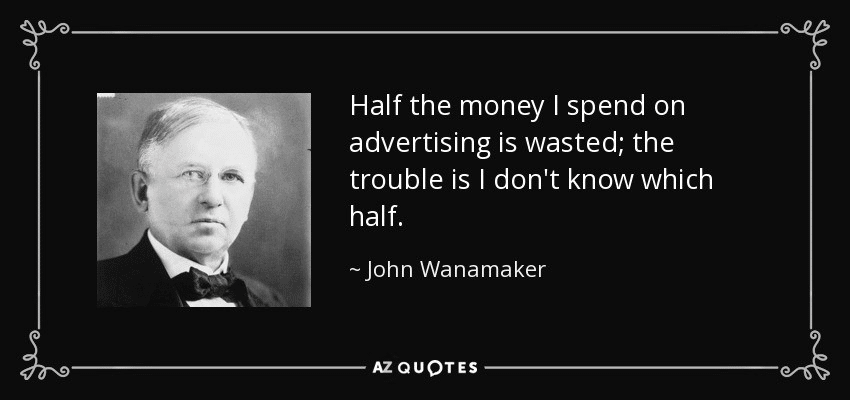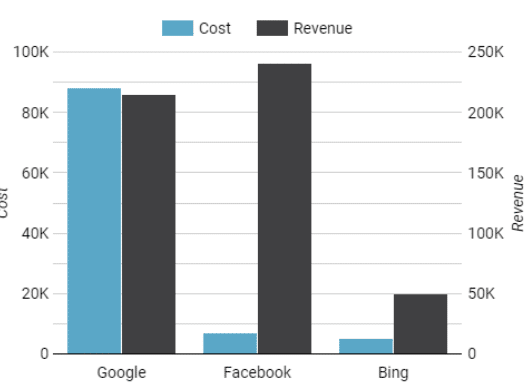Improving Advertising Efficiency, Part One: Understanding Incrementality
Part 1 of 2. To read the first installment, Improving Advertising Efficiency, Part Two: Measuring Incrementality, click here!
It’s late 3rd quarter and budget planning has begun at your company. In the off-site working session attended by the heads of all departments, the CEO announces a bold 20% revenue growth goal for the next fiscal year. Later in the presentation as she drills down into details, your CEO notes that she wants “efficient growth” with minimal increased spending. In fact only spending that can be shown to directly impact the top line will be approved.
As head of marketing, you shudder. At this point in the year, sales are only just at plan and the 4th quarter results are by no means assured. How in the world are you going to generate an additional 20% revenue with a flat marketing budget? Without knowing the incrementality of your advertising spend this is an extremely difficult question to answer
Incrementality: Not a New Problem
The question of what works and what doesn’t in advertising is not new. Over a century ago, the retail pioneer John Wanamaker famously quipped, “Half of what I spend on advertising is wasted. The trouble is, I don’t know which half!” This is the vexing problem that incrementality seeks to answer.

While the word “marketing” is often conflated with “advertising”, those schooled in the traditional “4 Ps” of marketing – Product, Price, Place, Promotion – know that advertising falls into the final P. Appropriately so, because without a product that people want, at a price they are willing to pay and in a place where they can conveniently access it, no advertising strategy, no matter how brilliant or how big of a budget, can drive sustained success.
Yet, assuming the other 3 Ps are soundly executed, a strong promotional (advertising) strategy is essential to overall marketing success. Once the consumer research is done and the creative and messaging strategy determined, the question of where to advertise with what level of spend remains one of the most complex decisions a marketing leader must make.
What Does “Wasted” Advertising Mean?
Unlike Wanamaker’s day, there are dozens of media options where ads can be placed and thus dozens of places where you can potentially “waste” your advertising budget. But what does “waste” mean? In the context of marketing incrementality measurement, it means simply that a particular advertising campaign played no detectable role in a consumer’s purchase process. Said another way, the consumer would have purchased even if they had never seen or heard a brand’s advertising.

Incrementality is when advertising is shown to have a causal relationship with the act of purchasing a product or service. Advertising that does not play a causal role in the purchase process can be viewed as non-incremental or “waste.”
The Problem of Double-Counting
Granular has a client where we are managing digital advertising across multiple platforms and channels including Google/Bing Search, Shopping, Performance Max, and Display, as well as Meta. Platform reporting shows all channels with a positive ROAS. In fact, the attributed revenue across all platforms and channels significantly exceeds total web (GA) revenue. Meta in particular reports revenue nearly equal to Google but with only 10% of the spend.

Seasoned digital marketers know this scenario all too well. With its default attribution settings, Meta credits to itself all conversions that a consumer clicks or views without clicking. Unless the attribution settings are changed, The result is a high proportion of “view-through” conversions and conversions that are also reported in other ad platforms, in this case Google.
Why This Is a Problem
This “double counting” of conversions and revenue by ad platforms makes it difficult for marketers to make optimal budget allocations. Yes, Meta is almost certainly overstating its performance in-platform, but by how much?
A common remedy to this problem is to use only GA tracked conversions and revenue which most often shows a drastically different picture, or to switch to click-only attribution in-platform on Meta. The risk is under crediting the value and role of ad views in the purchase process, which can be significant.
In this case, we suspected that while clearly overstating its performance, Meta was playing an important role in the purchase process, especially upper funnel, and that there was actually a case to be made for increased budget on the platform.
Finding the Truth with Incrementality
To figure out the real value of Meta’s ads and decide on the right budget, we needed to measure incrementality. The gold standard way to test this methodology in marketing is the Geo Experiment. So to round this out, in Part 2, we’ll explain how to use Geo Experiments to measure incrementality and how they can help you make better decisions about your ad budget.
To read Improving Advertising Efficiency, Part Two: Measuring Incrementality, please click here!
Questions?
If you have any questions or are interested in having Granular help grow your business, please use the button below to get in touch!